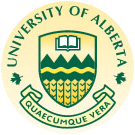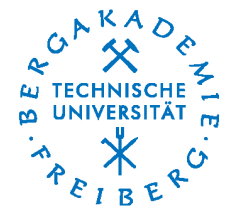EAW_Body
Computational Group
Areas of Modeling
Modelling of thermo-chemical conversion processes (solid-liquid-gas)
Energy to chemicals (E2C).
Heat storage.
Combustion/gasification of solid carbonaceous (coal + biomass) materials.
Melting/solidification of single-component and multi-component materials.
Projects
2019-2025: Eenrgy to Chemicals (E2C) using direct electrical current flowing through dense beds
Description: The primary objective of this research project consists in gaining a fundamental understanding of the transport processes in a new type of fixed-bed reactor for endothermic reforming, e.g. steam methane reforming and dry reforming of methane. This reactor consists of two sorts of spherical particles: electrically conductive particles and electrically nonconductive catalyst particles. The addition of catalyst particles can increase the conversion rate of endothermic chemical reactions. The main feature of this reactor is the application of electric resistance heating using the electrically conductive particles, which heat the nonconductive catalyst particles and reacting gas inside the reactor. The main purpose of this reactor is to store electricity produced from renewable sources in chemicals such as syngas. The so-called overproduced electricity can also be used, especially when electricity prices are negative. The main advantage of this proposed reformer is that it can work at any time when overproduced electricity is available.
2020-2025: Computational fluid dynamics(CFD) modeling of gas distribution and flow in packed-beds (with Prof. A. Rajendran)
Description: The main objective of this research is to develop three dimensional (3D) models of unsteady heat and mass transfer in an adsorption column taking into acount the multiscale nature of transport processes inside the column. Numerical simulations will be carried out using different turbulence models adopted for fixed beds.
2020-2025: Mechanical method/flow-assisted demulsification to enhance removal of water drops and fine solids (with Prof. H. Zeng)
Description: The main objective of this research is devoted to numerical and experimental investigation of flow-assisted demulsification under different flow condtions including rotating flows. Experimental results will be used to validate different multiphase CFD-based models enabling prediction of large amount of droplets behavior under different local shear stress conditions. Semi-empirical sub-models will be used to take into account droplet coalescence under different flow conditions.
2018: Numerical modelling of three-phase cavitation flows through venturi
Description: In this project, the so-called three-phase Euler-Euler-Euler-based model available in a commercial CFD software will be adapted to simulate cavitation phenomena in venturi. Using the results of 2D and 3D CFD simulations we develop and validate a simplified semi-empirical model which will be used to predict pressure drop in a venturi in dependence on inflow parameters such as the location of air injection, volume fraction of solid phase and venturi geometry.
2018-2019: Numerical simulation and experimental validation of a large scale industrial biochar plant
Description: The main objective of this research project focuses on optimization of performances of biomass pyrolysis processes for use in biochar systems. Computational Fluid Dynamics simulation is used in order to carry out parametric studies on combustion and thermal conversion in a large-scale biochar reactor to find input parameters increasing productivity of exisiting pyrolysis plant.
2014-2019: Numerical modeling of phase-change phenomena in particulate flows
Description: The main objective of this research project consists in gaining a fundamental understanding of the behaviour of phase-change phenomena in particulate flows under the influence of gravity. In particular, this research focuses on the development of numerical and subgrid models for interfacial heat and mass transfer applied to moving particles undergoing phase change. These models serve as a coupling between discrete element based models (DEM) and computational fluid dynamics-based models (CFD), which are standard tools used in computational engineering.
2013-2018: Numerical modeling of chemically reacting particles in dense particulate media
The main objective of this research project consists in development and validation of new subgrid models for chemically reacting particles in dense particulate media (fixed beds & fluidized beds). Such subgrid models are necessary to bridge macro-flows with micro-scale interphase phenomena occurring on the interface and inside moving particles.
2016-2017:Adaptation of Euler-Euler multi-phase model available in ANSYS-Fluent software for modeling of coal gasification in a fluidized bed
The main goals of this project are to adapt and validate of Euler-Euler multi-phase model available in ANSYS-Fluent software for modeling of coal gasification in a fluidized bed.
This work is devoted to a comparative numerical study of an endothermic fluidized bed gasifier using different submodels for char conversion rates. In particular, two models are compared: an intrinsic one coupled with the random pore model (RPM) and the Baum & Street model, which represents a surface based model. Both models have been implemented into the two-phase Eulerian-Eulerian model available in the commercial CFD solver Fluent 16.2 using user defined functions (UDF). The implementation of both models has been verified against analytical solutions revealing excellent agreement between numerical simulations and analytical model predictions. 2D simulations showed that, in spite of some similarities in hydrodynamics of fluidized bed regimes, a significant influence of the char conversion submodel on the char conversion rates have been found. The influence of models parameters (the second Damkoehler number, the Thiele modulus and RPM input parameters) and inflow parameters (reactor wall temperature and inflow velocity) has been studied in details.
2017: Computational study on temperature control of waste-water ponds using insulated floating covers
Recently, a great interest for insulating floating covers arose from operators of wastewater storage and treatment plants due to new regulations in environmental protection. In particular, insulated floating covers can be used now to prevent a possible precipitation of chemicals in wastewater ponds due to a rapid drop in ambient temperature. One of the examples is so-called ammonification of wastewater during winter time due to low temperatures in cold weather. The ammonification effect can be mitigated by the use of insulated covers to retain the heat inside wastewater ponds during cold weather (-40 C). The thickness of the insulation is directly related to the costs of coverings. Thus, one of critical issue in application of insulated floating covers is the prediction of cover thickness which guarantees the temperature control within given time intervals. In absence of accurate models, a very conservative value of thickness is used. In this view, an accurate modeling of the transient heat transfer inside ponds insulated by floating covers is needed for optimal design of floating covers considering local weather conditions and geometry of a pond. The outcomes of this project are numerical and semi-empirical models of the heat transfer dynamic of a wastewater pond. Both models will be used to optimize insulation thickness of floating covers in terms of their cost-effectiveness for different weather conditions and pond geometries.
2016: Development of efficient and inexpensive thermal energy storage (TES) system for solar-thermal-electric power generation
The main objective of this research project consists in development and validation of a new mathematical model for a novel autonomous electricity generation system patented by a Canadian R & D company, Innovative Solar Power (ISP). This novel system stores solar energy in the thermal energy storage (TES) and then directly converts this thermal energy to electricity. One of the challenges in the production of the final hardware is to increase the overall efficiency of the system by geometry-optimization of the energy storage device and charging/discharging processes. In particular, optimization of proposed TES geometry and parameters is essential task to keep the cost of the system low. In the proposed project, using Computational Fluid Dynamics (CFD) models, numerical modeling of the unsteady heat transfer inside the TES applied for several charging/discharging cycles will be performed to optimize the geometry of TES. Semi-empirical model developed and validated will allow ISP company and end-users of electricity generation system to optimize working parameters of TES without computationally expensive numerical simulations. The results of the project will also contribute significantly to the reduction of TES-production and TES-application costs.
2015: Computational study on co-firing of biomass with coal in an industrial scale furnace: effect of biomass/coal ratio on flame stability and heat flux distribution
The main objective of this research project consists in a computational study on the co-firing of biomass with coal in an industrial-scale furnace used for power generation. Particular attention will be paid to investigating the possible effect of the biomass/coal ratio on flame stability and heat flux distribution.
One of the issues in the use of pulverized coal (PC) firing for electricity production is the emission of carbon dioxide, which remains a significant environmental problem because of climate effects. In this regard, the utilization of biomass as a co-fired fuel has proved to be a significant option for the mitigation of greenhouse gas emissions due to the sustainable nature of biomass. Generally, a small amount of biomass co-firing does not require significant modifications to existing burners and boiler systems using pulverized coal (PC). However, to optimize the working parameters and efficiency of PC boilers and burners it is necessary to calculate the maximum biomass/coal ratio allowing existing burners to be used without significant modifications, which may cause additional costs. Such calculations can be carried out using Computational Fluid Dynamics (CFD) models and software.
The data gained in this project will contribute significantly to the industrial partner's decision-making on implementing co-firing biomass with coal in its coal-fired boilers. Additionally, the modeling results will be used to estimate the possible costs of biomass co-firing by coal combustion. Besides improving the scientific understanding of heat and mass transfer inside an industrial-scale furnace, using biomass-coal blending can significantly contribute to technological innovations in the field of efficient biomass co-firing with coal during energy generation worldwide.
2014: Three dimensional numerical modeling of slurry flows in a rock fracture
The main objective of this research project consists in gaining an understanding of the behavior of slurry (mixture of a fluid and particles) flows pumped into a fracture during hydraulic fracturing. The main idea of hydraulic fracturing is a pumping of fracturing fluid into an oil-bearing formation in order to stimulate oil and gas extraction from new and existing wells. In particular, the fracturing slurry containing proppant (solid particles) is pumped into a well keeping the created channels open after the treatment ceases and sustains the closure stresses. Improving our scientific understanding of slurry flows in fractures will help to design novel engineering computational models in hydraulic fracturing engineering. Moreover, new insights into hydrodynamics of slurries will go on to maximize the extraction of inaccessible hydrocarbons and to reduce operation costs for companies engaged in hydraulic fracturing engineering. The data gained in this project will contribute to a significant improvement in the computational software used by companies to improve existing hydraulic fracturing processes in order to optimize between the increase in hydrocarbon-extraction rates and reduction of operation costs. Finally, adequate prediction of slurry flows in fractures will help to enhance the environment-protection issues by hydraulic fracturing world-wide.
2013, Germany: HITECOM - High Temperature Conversion Optical Measurement (with Prof. B. Meyer, Dr. S. Guhl)
The newly developed HITECOM reactor provides the possibility of in-situ analysis of single particle reactions. It combines the capabilities of a magnetic suspension thermobalance with state of the art optical analysis. The surface temperature and carbon conversion of single particles are measured under well defined flow conditions. The generated data enables the detailed validation of CFD single particle models. For this reactor, a special temperature resistant particle holder had to be constructed, which is able to fix various particles in direct flow during gasification. An in-situ Raman spectroscopy setup was established for quantitative gas analysis at pressures between 1 and 20 bar and temperatures up to 965 C. The Rayleigh/Raman scattering was measured perpendicular to the flow direction with a spectrograph and ICCD camera.
2009-2013, Germany: VIRTUHCON: Group Interphase Phenomena
The main subject of this project is understanding and modeling the interaction between individual particles and surrounding fluid including chemical reactions on the interface between two phases. In particular, coal (wood) pyrolysis (synthetic gas production) and the thermal decomposition of ironstone (iron making) are considered as background processes under investigation. The project is a self-standing one which, however, greatly benefits from a close interaction with the Groups 'Reaktionsstroemungssysteme' and 'Multiphasige Stoffsysteme'.
The global objective of the project is the development of numerical models devoted to the modeling of chemical-reacting multi-phase systems including solid-gas, solid-liquid and liquid-gas phases. To achieve this aim, the project is based on an approach which combines numerical simulations of phase-change phenomena on the meso- and the microscale. In the first phase, coal pyrolysis is considered, exclusively, the material properties of which are well documented. The microsimulations pursue two main goals. The first is the prediction of the drag force and the heat and the mass transfer coefficients, which are needed in the project “Reaktionsströmungssysteme” for the macro-scale simulations of chemical reacting flow. The second is the simulation of the evolution of the shape of a coal (wood) particle during pyrolysis including the prediction of the time of dissolution of particles and their porous structure. The main goals of mesoscale simulations are seen in the calculation of the transient dynamic of small particles (the diameter is less than m) and their shape change during pyrolysis by taking into account the interactions: particle-particle, particle-fluid and particle–wall for different numbers of particles.
The vision followed by the project in the short term consists in understanding the transient dynamics of pyrolysis processes on the microscale including physical and chemical transformations on solid-gas and solid-liquid boundaries.
The long-term vision is a contribution to a complex multi-scale model of a fluidized bed gasifier in order to optimize the processes and to enhance the efficiency of synthetic gas production and iron making.
ACKNOWLEDGMENT
Financial supports from funding agencies, universities and companies presented below are gratefully acknowledged.












